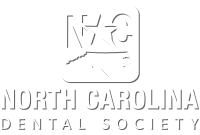Restorative dentistry can be summarized as the practice of restoring strength, form and function to the bite. Restorative treatments range from correction of the color and shape of teeth to full mouth reconstruction. Fortunately, new technologies allow these services to be provided faster, quieter, more comfortable and often more aesthetically pleasing.
Restorative dentistry procedures include:
Porcelain crown – a permanently bonded covering fitted over a prepared tooth. A crown resembles the form of a natural tooth, and the porcelain composition provides a natural, semi-translucent appearance.
Veneer – a thin, semi-translucent porcelain covering that is permanently bonded to the front surface of teeth. Unlike crowns, a veneer restoration does not always require the natural tooth to be reduced in size prior to placement.
Implant restoration – An implant restoration often consists of a two part system: a precise foundation-abutment that is seated into the existing implant, and a crown that is cemented onto the abutment-foundation. Dr. Ray arranges a consult for the surgical implant procedure with an oral surgeon or periodontist. Once the implant is seated and integrated, the surgeon releases the patient to Dr. Ray’s care. The implant is then restored with a crown-system appropriate for the implant design.
Bridge– a dental appliance used to replace one or more missing teeth. A bridge resembles a series of attached crowns, with the crown on each end attaching to a pre-existing tooth.
Filling – a tooth-colored restorative material used to renew areas of tooth loss caused by decay or natural wear.
Partial denture – a removable appliance replacing one or more teeth in which the replacement teeth are attached to a gum-colored plastic base. A metal framework provides strength and retention in the dental arch.
To learn more about all oral health topics, please visit the MouthHealthy website from the American Dental Association.





